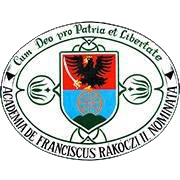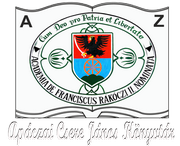Please use this identifier to cite or link to this item:
https://dspace.kmf.uz.ua/jspui/handle/123456789/5418Full metadata record
| DC Field | Value | Language |
|---|---|---|
| dc.contributor.author | Robert Bacho | en |
| dc.contributor.author | Бачо Роберт | uk |
| dc.contributor.author | Bacsó Róbert | hu |
| dc.contributor.author | Veronika Hanusych | en |
| dc.contributor.author | Ганусич Вероніка | uk |
| dc.contributor.author | Hanuszics Veronika | hu |
| dc.contributor.author | Gabor Pataki | en |
| dc.contributor.author | Потокі Габор | uk |
| dc.contributor.author | Pataki Gábor | hu |
| dc.date.accessioned | 2025-10-20T06:31:30Z | - |
| dc.date.available | 2025-10-20T06:31:30Z | - |
| dc.date.issued | 2025 | - |
| dc.identifier.citation | Robert Bacho, Veronika Hanusych, Gabor Pataki: Analysis of the results of state support programmes for agricultural producers in Transcarpathia. In Інвестиції: практика та досвід. 2025. № 14. c.132-138. | en |
| dc.identifier.issn | 2306-6814 | - |
| dc.identifier.other | DOI: https://doi.org/10.32702/2306-6814.2025.14.132 | - |
| dc.identifier.other | DOI: https://doi.org/10.32702/2306-6814.2025.14 | - |
| dc.identifier.uri | https://dspace.kmf.uz.ua/jspui/handle/123456789/5418 | - |
| dc.description | https://nayka.com.ua/index.php/investplan/issue/view/232 | en |
| dc.description.abstract | Abstract. The article analyses the outcomes of state support programmes for agricultural producers inTranscarpathia under the "Own Orchard" and "Own Greenhouse" initiatives within the eRobotaframework, which aimed to stimulate orchard and greenhouse development, employment generation,and regional resilience in the agricultural sector. The research addresses the strategic role ofTranscarpathia's agriculture, reflecting its multifunctionality in ensuring food security, maintainingcultural landscapes, and supporting rural livelihoods under conditions of socio-economictransformation.The methodological framework combines statistical analysis of grant allocation data, clusteranalysis to group regions by performance, and interpretation of spatial and financial patterns in grantutilisation. Ward's hierarchical clustering method with Euclidean distance was applied usingstandardised values of area, approved and disbursed grants, enabling the classification of Ukrainianregions into three clusters based on their participation in grant-supported development.Results reveal that Transcarpathia emerged as the national leader, with over 594 hectares oforchard and greenhouse areas covered by grants, and the highest volumes of approved and paidfunding, demonstrating the active engagement of local agricultural producers and authorities. Clusteranalysis identified Transcarpathia alongside Kyiv, Vinnytsia, Dnipropetrovsk, Zhytomyr, and Lviv asthe most active participants, while other regions showed moderate or limited engagement, reflectingdifferences in agricultural potential, institutional readiness, and regional capacity for grantabsorption. 133ЕКОНОМІЧНА НАУКАGENERAL STATEMENT OF THE PROBLEMAND ITS CONNECTION WITH IMPORTANTSCIENTIFIC OR PRACTICAL TASKSThe development of agriculture is a key driver of regionaleconomic growth, food security, and social stability,particularly in Transcarpathia, where agriculture forms aPractical outcomes of the programmes include the creation of over 2,000 permanent and nearly40,000 seasonal jobs nationwide, the expansion of sustainable horticultural and greenhouseinfrastructure, and the stimulation of local economies. The analysis underscores the critical role oftransparent and well-structured state support in promoting agricultural modernisation and enhancingregional resilience while addressing the pressing need for increased domestic food production. Despitethe success, challenges remain, including limited data consistency, administrative barriers, and thetemporary suspension of grant applications due to the full utilisation of allocated funds for 2025. Futureresearch should focus on assessing the long-term socio-economic impacts of these grants oncommunity resilience and the effectiveness of integration with sustainable development goals.The findings contribute to the theoretical understanding of state-supported agriculturaldevelopment under conditions of decentralised governance while offering practical insights forpolicymakers and practitioners in designing targeted, transparent, and efficient financial supportprogrammes aligned with regional needs and capacities. | en |
| dc.description.abstract | Резюме. У статті здійснено аналіз результатів реалізації державних програм підтримки сільськогос-подарських виробників Закарпаття в рамках ініціатив "Власний сад" та "Власна теплиця" про-єкту "єРобота", спрямованих на стимулювання розвитку садівництва та тепличного господар-ства, створення робочих місць та зміцнення регіональної стійкості аграрного сектору. Дослід-ження підкреслює стратегічну роль сільського господарства Закарпаття у забезпеченні про-довольчої безпеки, збереження культурних ландшафтів та підтримки сільських громад в умо-вах соціально-економічної трансформації.Методологічна база дослідження поєднує статистичний аналіз даних щодо розподілу грантів,кластерний аналіз для групування регіонів за рівнем участі та інтерпретацію просторових і фінан-сових закономірностей використання грантової підтримки. Використано ієрархічний кластер-ний аналіз методом Уорда з евклідовою відстанню, що дозволило класифікувати регіони Ук-раїни за показниками площі, обсягів затверджених та виплачених грантів у сфері садівництвата тепличного господарства.Результати засвідчили, що Закарпаття стало національним лідером за площею садів і теп-лиць, що отримали грантову підтримку (понад 594 га), та за обсягами фінансування, що відоб-ражає активну участь місцевих агровиробників та органів влади у залученні державної підтрим-ки. Кластерний аналіз дозволив виділити Закарпаття разом із Київською, Вінницькою, Дніпро-петровською, Житомирською та Львівською областями як регіони з найвищими показниками,тоді як інші області демонстрували середній або обмежений рівень залучення через відмінностів потенціалі та інституційній спроможності. Практичним результатом програм стало створенняпонад 2 000 постійних і майже 40 000 сезонних робочих місць, розвиток інфраструктури садів-ництва та тепличного господарства, стимулювання локальних економік. Дослідження підкрес-лює ключову роль прозорої та структурованої державної підтримки у модернізації аграрногосектору та зміцненні регіональної стійкості, особливо в умовах необхідності підвищення внут-рішнього продовольчого виробництва.Водночас залишається низка викликів, серед яких недостатня уніфікованість даних, адміні-стративні бар'єри та тимчасове призупинення подання заявок через повне використання бюд-жетних асигнувань на 2025 рік. Перспективою подальших досліджень є оцінка довгостроковихсоціально-економічних наслідків грантової підтримки для розвитку громад та вивчення інтег-рації таких програм з цілями сталого розвитку. | uk |
| dc.language.iso | en | en |
| dc.publisher | ТОВ «ДКС Центр» | en |
| dc.relation.ispartofseries | ;№ 14 | - |
| dc.rights | Attribution-NonCommercial-NoDerivs 3.0 United States | * |
| dc.rights.uri | http://creativecommons.org/licenses/by-nc-nd/3.0/us/ | * |
| dc.subject | state support | en |
| dc.subject | agriculture | en |
| dc.subject | Transcarpathia | en |
| dc.subject | grant programmes | en |
| dc.subject | horticulture | en |
| dc.title | Analysis of the results of state support programmes for agricultural producers in Transcarpathia | en |
| dc.title.alternative | Аналіз результатів реалізації державних програм підтримки сільськогосподарських виробників Закарпаття | en |
| dc.type | dc.type.article | en |
| Appears in Collections: | Bacsó Róbert Hanuszics Veronika Pataki Gábor | |
Files in This Item:
| File | Description | Size | Format | |
|---|---|---|---|---|
| Bacho_Hanusych_Pataki_Analysis_of_support_programmes__producers_in_Transcarpathia_2025.pdf | Robert Bacho, Veronika Hanusych, Gabor Pataki: Analysis of the results of state support programmes for agricultural producers in Transcarpathia. In Інвестиції: практика та досвід. 2025. № 14. c.132-138. | 2.65 MB | Adobe PDF | View/Open |
This item is licensed under a Creative Commons License





